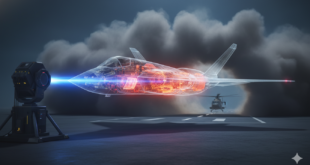Introduction:
In the vast expanse of space exploration, the emergence of small spacecraft has revolutionized our approach to exploring the cosmos. These diminutive yet powerful vehicles, often referred to as CubeSats or nanosatellites, have opened new frontiers for scientific research, commercial endeavors, and educational initiatives. At the heart of these spacefaring marvels lies their avionics systems, the intricate network of electronics and software that governs their navigation, communication, and operation. Small Spacecraft Avionics (SSA) encompasses a wide array of electronic subsystems, components, instruments, and functional elements integrated into the spacecraft platform.
These systems, including Command and Data Handling (C&DH), Flight Software (FSW), and Payload and Subsystems Avionics (PSA), are pivotal in orchestrating successful missions beyond Earth’s atmosphere. In this article, we embark on a journey to unravel the intricacies of SSA, exploring its requirements, architecture, and the transformative impact it has on space exploration.
Core Functions of SmallSat Avionics
Avionics, short for aviation electronics, encompasses the electronic systems used in spacecraft, aircraft, and other aerospace vehicles. In the context of small spacecraft, avionics play a pivotal role in enabling mission success within the constraints of size, weight, and power. Unlike their larger counterparts, small spacecraft operate on a scale where every gram and watt must be meticulously optimized to achieve mission objectives.
Despite the size constraints, SmallSat avionics fulfill critical functions similar to traditional spacecraft, acting as the central nervous system:
- Attitude Determination and Control System (ADCS): Navigation and guidance systems form the backbone of small spacecraft avionics, enabling precise control and maneuverability in orbit. Maintains the satellite’s orientation and stability in the three-axis world of space. hese systems rely on a combination of sensors, such as gyroscopes, accelerometers, magnetometers, and Global Navigation Satellite System (GNSS) receivers, to determine the spacecraft’s position, orientation, and velocity relative to its target. It utilizes an inertial measurement unit (IMU) with gyroscopes and magnetometers to sense the satellite’s motion and attitude. Reaction wheels or thrusters, controlled by sophisticated algorithms, execute maneuvers and counteract environmental disturbances. Sophisticated algorithms process sensor data and execute commands to maintain desired trajectories, perform attitude adjustments, and avoid collisions with space debris or other objects.
- Command and Data Handling (C&DH): The brain of the avionics system, the C&DH processes commands received from ground stations via communication subsystems. It manages onboard data from sensors and payloads, often employing on-board processing for real-time decision-making and data filtering before transmission.
- Telemetry and Communication: Establishes communication links with ground stations for transmitting telemetry data (vital information on the satellite’s health, status, and sensor readings) and receiving commands. Avionics systems incorporate radio frequency (RF) transceivers, antennas, and protocols to establish reliable communication links across vast distances in space. Depending on mission requirements, small spacecraft may utilize different communication bands, such as UHF, VHF, S-band, X-band, or optical communication, to transmit data at varying data rates and frequencies.
- Power Management and Distribution Unit (PMDU): The PMDU acts as the power station of the satellite. It regulates and distributes electrical power generated from solar panels or batteries to various subsystems. The PMDU employs Maximum Power Point Tracking (MPPT) algorithms to extract maximum power from the solar panels and voltage regulators to ensure stable power delivery throughout the spacecraft.
- Payload Integration and Control: Small spacecraft often carry scientific instruments, cameras, sensors, or experimental payloads to conduct specific research or observations. Avionics systems must interface with these payloads, providing power, data processing, and control capabilities to ensure their proper functioning in space. This involves designing versatile interfaces, data buses, and power distribution systems that can accommodate a wide range of payload configurations while maximizing resource utilization and minimizing interference.
Requirements
The demands placed on small spacecraft avionics are formidable, necessitating reliability, performance, and resource efficiency. As missions become more ambitious, avionics must adapt to increasing data rates, onboard processing power requirements, and constraints in power consumption, mass, and cost. Standardization of interfaces, protocols, and algorithms becomes crucial to enable reusability and compatibility, paving the way for cost-effective space missions.
- Increasing Data Rates: In the realm of space science and earth observation, data is the currency of discovery. Higher data rates enable scientists to capture more information with greater precision and detail. This includes factors such as increased sampling rates, broader dynamic ranges, enhanced spectral and spatial resolutions, and the ability to handle more channels and auxiliary data. These advancements not only improve the quality of scientific results but also open new avenues for exploration and understanding of the cosmos.
- Miniaturization and Integration: Small spacecraft avionics are characterized by their miniaturization and integration capabilities. Engineers must design compact yet powerful electronic components that can withstand the rigors of space while consuming minimal power. This involves leveraging advanced microelectronics, including microprocessors, field-programmable gate arrays (FPGAs), and application-specific integrated circuits (ASICs), to pack computing power into a small form factor. Additionally, components must be ruggedized to withstand the harsh radiation and temperature extremes encountered in space.
- More Demand for On-board Processing Power: As data rates and volumes continue to soar, spacecraft face a mounting challenge in managing and processing the influx of information. With limitations on telemetry bandwidth, the need for on-board processing capabilities becomes paramount. Data reduction, compression, and on-board pre-processing algorithms play a crucial role in maximizing the efficiency of data transmission and storage, ensuring that valuable scientific data is effectively captured and utilized.
- Low Power Consumption: Spacecraft operate in environments where electrical power is scarce and costly in terms of spacecraft mass. Therefore, minimizing power consumption is imperative to extend mission durations and optimize resource utilization. Low-power avionics systems not only reduce operational costs but also contribute to overall spacecraft efficiency by conserving precious energy resources.
- Low Mass: Miniaturization is a key enabler for space missions, allowing spacecraft to achieve ambitious objectives while minimizing mass and volume constraints. Avionics elements benefit significantly from miniaturization, as reduced size often correlates with lower power consumption. By optimizing mass, spacecraft can enhance maneuverability, payload capacity, and mission flexibility, ultimately maximizing scientific return on investment.
- Low Cost: Cost-effective avionics solutions are essential for realizing ambitious space missions within budgetary constraints. Standardization of interfaces and building blocks streamlines development processes, fosters reusability, and reduces production costs. By leveraging economies of scale and adopting modular design principles, spacecraft manufacturers can achieve significant cost savings without compromising performance or reliability.
- Autonomy and Fault Tolerance: In the remote and harsh environment of space, small spacecraft must possess a degree of autonomy to respond to unexpected events or anomalies without relying on continuous human intervention. Avionics systems incorporate onboard software and algorithms for autonomous decision-making, error detection, and fault tolerance. Redundant components, fail-safe mechanisms, and error correction codes are employed to mitigate risks and ensure mission resilience in the face of unforeseen challenges.
The impact of avionics miniaturization has been underscored by studies such as the System on a Chip (SoC) analysis for the Jupiter Entry Probe (JEP). By replacing traditional avionics elements with SoC technology, significant reductions in mass, power, and complexity were achieved. These savings cascaded across other subsystems, leading to a smaller, lighter probe with enhanced operational efficiency. The potential of avionics miniaturization to drive cost savings and enable the design of challenging space missions is evident, highlighting the importance of continual innovation in spacecraft technology.
Architecture:
Traditionally, spacecraft avionics relied on centralized architectures, leading to issues of weight, power consumption, and limited reconfigurability. However, a paradigm shift towards open, distributed, and integrated architectures is underway. This new approach offers modularity in both software and hardware design, enhancing system resilience and adaptability. Incorporating radiation-hardened designs further bolsters reliability, critical for extended missions in deep space.
Traditional spacecraft avionics have typically been designed around centralized architectures. In these systems, each subsystem relies on a single processor, creating a significant vulnerability: if one element fails, the entire architecture is likely to fail. This design approach often results in a system with considerable weight, high power consumption, large volume, complex interfaces, and limited system reconfiguration capabilities. However, the shift towards open, distributed, and integrated avionics architectures is becoming increasingly appealing for complex spacecraft development. This modern approach emphasizes modularity in both software and hardware design, catering to the needs of extended missions in low-Earth orbit and deep space. To further enhance reliability, vendors are now incorporating radiation-hardened or radiation-tolerant designs into their small spacecraft avionics packages.
New-generation avionics systems aim to integrate most of the electronic equipment on the spacecraft, leveraging networked real-time multitasking distributed system software. These systems can dynamically reconfigure functions and task scheduling, thereby improving failure tolerance and reducing the reliance on expensive radiation-hardened components. High-performance computing hardware is included to handle the large data volumes generated by complex small spacecraft, while embedded system software facilitates real-time multitasking and distributed system operations. Additionally, software partition protection mechanisms ensure operational integrity. Some systems now feature heterogeneous architectures in mixed criticality configurations, incorporating multiple processors with varying performance and capabilities.
An exemplary application of new-generation SSA/PSA distributed avionics is the integration of Field Programmable Gate Arrays (FPGA)-based software-defined radios (SDR) in small spacecraft. These radios can transmit and receive in various radio protocols based on a modifiable, reconfigurable architecture, enabling the design of adaptive communication systems. This technology increases data throughput and allows for software updates on-orbit, known as re-programmability. Additional FPGA-based elements include imagers, AI/ML processors, and subsystem-integrated edge and cloud processors. The ability to reprogram sensors or instruments while on-orbit has proven beneficial for several CubeSat missions, especially when instruments underperform or require rapid reprogramming during extended missions.
Current-generation microprocessors are capable of meeting the processing requirements of most C&DH subsystems and are likely to suffice for future spacecraft bus designs. As small satellites transition from early CubeSat designs with short-term mission lifetimes to potentially longer missions, radiation tolerance becomes a critical factor in component selection. Spacecraft manufacturers are increasingly using space-qualified parts, which, despite often lagging behind their commercial counterparts in performance, are essential for meeting radiation requirements.
Traditional spacecraft designs often follow the “plug into a backplane” VME standards. The 3U boards, measuring roughly 100 x 160 mm, offer a size and weight advantage over the larger 6U boards, which measure approximately 233 x 160 mm, if the design can be accommodated in the smaller form factor. The CompactPCI and PC/104 form factors remain the industry standard for CubeSat C&DH bus systems, with multiple vendors providing components that can be readily integrated into space-rated systems. These form factors must fit within the standard CubeSat dimension of less than 10 x 10 cm.
Numerous vendors are producing highly integrated, modular, on-board computing systems for small spacecraft. These C&DH packages combine microcontrollers and/or FPGAs with various memory banks and standard interfaces for subsystem integration. The flexibility of FPGAs and software-defined architectures allows designers to implement uploadable software modifications to meet new requirements and interfaces.
In typical C&DH systems, the FPGA functions as the Main Control Unit, interfacing with all functional subcomponents. This setup enables embedded, adaptive, and reprogrammable capabilities in modular, compact form factors, offering inherent architectural benefits such as processor emulation, modular redundancies, and “software-defined-everything.”
Recently, several radiation-hardened embedded processors have become available for use as core processors in various applications, including C&DH. Notable examples include the Vorago VA10820 (ARM M0), VA41620 and VA41630 (ARM M4), Cobham GR740 (quad-core LEON4 SPARC V8), and the BAE 5545 quad-core processor. These processors have undergone radiation testing to withstand at least 50 kRad total ionizing dose (TID).
On-board memory for small spacecraft varies widely, starting around 32 KB and increasing with technological advancements. High reliability is essential for C&DH functions, prompting the development of various memory technologies with specific traits, including Static Random Access Memory (SRAM), Dynamic RAM (DRAM), flash memory (a type of electrically erasable, programmable, read-only memory), Magnetoresistive RAM (MRAM), Ferro-Electric RAM (FERAM), Chalcogenide RAM (CRAM), and Phase Change Memory (PCM). SRAM is commonly used due to its cost-effectiveness and availability
ESA’s Reference Architecture:
The European Space Agency (ESA) spearheads developments in avionics architectures and onboard networks. The SpaceWire (SpW) interface, with its high data rates and fault isolation properties, serves as a cornerstone for interconnecting avionics elements. MIL1553 and Controller Area Network (CAN) buses offer robust alternatives for low data rate applications, while SpaceFibre promises unparalleled bandwidths for future missions.
SpaceWire (SpW)
SpaceWire (SpW) is a well-established standard interface for high data rate on-board networks. Key features of SpW include:
- Data rate: Up to 400 Mbps (typically 200 Mbps)
- Connector: 9-pin Micro-miniature D-type connector, with link cable lengths up to 10m (point-to-point)
- Signaling: Low Voltage Differential Signaling (LVDS), +/-350 mV typical, with fault isolation properties
- Termination: 100 Ohm termination, with power typically 50 mW per driver-receiver pair
- Standards: Established ECSS standard
- IP size: Simple, small IP (5-7 k logic gates)
- Connectivity: Supports simple point-to-point connections or complex networks via routers
- Time distribution: Supports time distribution with microsecond resolution
- Data transfer: Supports Remote Memory Access Protocol (RMAP)
For more complex SpW-based on-board networks, router chips are necessary to interconnect multiple nodes. Several manufacturers provide radiation-hardened (radhard) chips, and ESA has supported the development of a router chip that offers 8 full duplex SpW links with data rates up to 200 Mbps
Innovation at the Forefront: The Future of SmallSat Avionics
The SmallSat avionics market is a hotbed of innovation, constantly pushing the boundaries of miniaturization, efficiency, and functionality. The evolution of SSA is propelled by cutting-edge technologies such as Field Programmable Gate Arrays (FPGAs) and software-defined radios (SDRs). FPGAs enable onboard reconfigurability, empowering spacecraft to adapt to changing mission requirements. SDRs revolutionize communication capabilities, offering flexibility and increased data throughput. Additionally, advancements in radiation-hardened processors and memory technologies ensure robust performance in harsh space environments.
Here are some exciting trends shaping the future:
- Radiation-Hardened by Design: As SmallSats venture into harsher radiation environments, like low-Earth orbit (LEO) and beyond, manufacturers are developing radiation-hardened components specifically for space applications. These components utilize special manufacturing processes and materials to mitigate the damaging effects of space radiation on electronics.
- Software-Defined Radios (SDRs): SDRs are revolutionizing communication in SmallSats. These versatile radios can handle various communication protocols within a single unit, reducing size, weight, and power consumption compared to traditional, dedicated radios. Additionally, SDRs offer software-based reconfigurability, allowing for easy adaptation to different mission needs.
- On-Board Processing Powerhouse: Advancements in miniaturized, low-power processors are enabling on-board data processing capabilities for SmallSats. This allows for real-time analysis of sensor data, enabling autonomous decision-making and reducing reliance on ground control for critical tasks.
- 3D Printing Revolution: 3D printing is transforming the way avionics components are manufactured. This technique allows for the creation of complex, lightweight avionics components
Conclusion:
As humanity’s appetite for space exploration continues to grow, small spacecraft avionics will play an increasingly vital role in unlocking the mysteries of the cosmos. These marvels of engineering enable missions that were once thought impossible, empowering scientists, engineers, and enthusiasts to venture beyond the confines of Earth and explore new frontiers. With ongoing advancements in technology and innovation, the future holds boundless possibilities for small spacecraft avionics, paving the way for humanity’s continued journey into the depths of space. Through collaboration, innovation, and a relentless pursuit of excellence, humanity continues its journey to explore the vast expanse of space, driven by the remarkable capabilities of small spacecraft avionics.
References and Resources also include:
https://www.nasa.gov/smallsat-institute/sst-soa/small-spacecraft-avionics
https://smartech.gatech.edu/bitstream/handle/1853/26366/68-228-1-PB.pdf
 International Defense Security & Technology Your trusted Source for News, Research and Analysis
International Defense Security & Technology Your trusted Source for News, Research and Analysis




